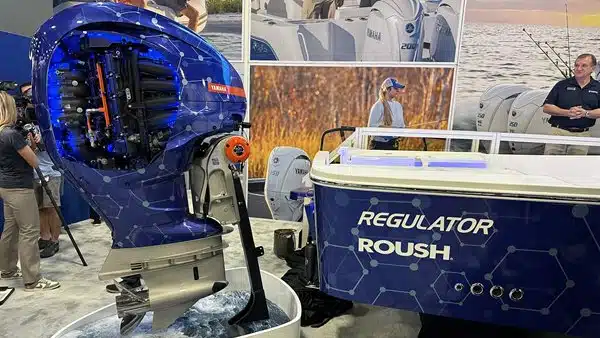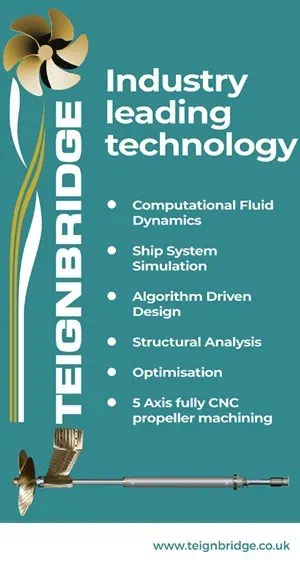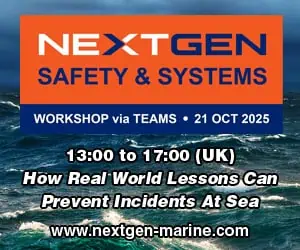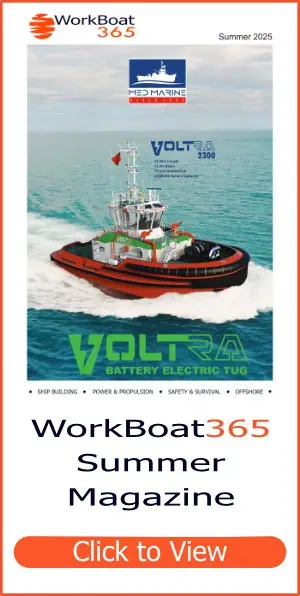Yamaha Motor Corporation unveiled the world’s first hydrogen-powered outboard along with a prototype fuel system integrated into a vessel that the company plans to further refine for testing later this year. The effort is part of Yamaha’s strategy to achieve carbon neutrality: deploying multiple technology solutions.
Yamaha joined forces with Roush to develop the fuel system to power the new outboard and collaborated with long-time boat builder partner Regulator Marine to build a boat suitable for testing the prototype outboard. Together, the companies plan to begin testing the prototype for viability on the water in the summer of 2024.
“Yamaha is exploring all possibilities to achieve carbon neutrality, and we’ve made commitments for our operations to be carbon neutral by 2035 and our products to become carbon neutral by 2050. That goal within the marine market can only be reached through an approach that leverages multiple solutions. We believe hydrogen is a viable method of achieving these goals,” said Ben Speciale, President, Yamaha U.S. Marine Business Unit. “Yamaha wants to be a leader in this space, and we encourage others in the marine industry to become involved as we look for ways to build infrastructure and new policy around innovations.”
By working with Roush on the fuel system engineering, Yamaha gains the benefit of more than two decades of hydrogen systems integration and research.
“When you look at Roush’s history with hydrogen, it ranges from land speed record vehicles to spacecraft. A lot of that knowledge we’ve acquired over the years we are now applying directly to this Yamaha project,” said Matt Van Benschoten, Vice President, Advance Engineering, Roush. “We are the fuel systems integrator, responsible for fuel systems designs, all of the specifications development, physical integration, safety system analysis as well as testing and development. Yamaha is trying to determine if hydrogen can successfully be used in this market, and I think we will find out the answer is ‘yes.’”
Regulator Marine built a hull based on the 26XO and modified it to accommodate the hydrogen tanks necessary to power the new outboard. Together, Yamaha, Regulator and Roush displayed the boat hull, fuel system and outboard to demonstrate how hydrogen could work as a possible fuel source in a marine environment. Also, the effort allows engineers to begin the process of determining marine standards for the use of hydrogen in vessels.
“If we don’t look for a new source, we won’t find a new source. Innovation starts by asking questions. It creates a little angst, but at the end of the day good stuff comes out of innovation,” said Joan Maxwell, President, Regulator Marine. “In the future, as we design boats, if this proves what we think it will, it could be very possible that we are designing hulls around these hydrogen fuel tanks.”
“Through our relationship with Regulator Marine, we have the ability to test our prototype in a premium boating environment that reflects Yamaha’s brand position, and we have the ability to lead the way in the development of hydrogen as a fuel source in marine environments,” continued Speciale. “We’re excited to watch this project develop and look forward to taking the next steps.”
Yamaha announced the hydrogen outboard project last December. Further demonstrating the company’s commitment to a multi-technology approach to carbon neutrality, Yamaha recently announced plans to acquire all shares of electric outboard company Torqeedo.® In addition, Yamaha continues to promote the use of sustainable fuels within internal combustion outboard engines as another alternative.










